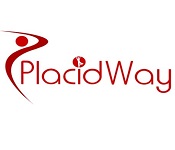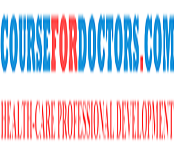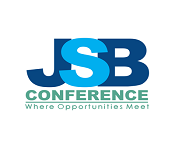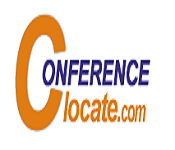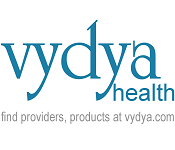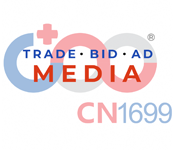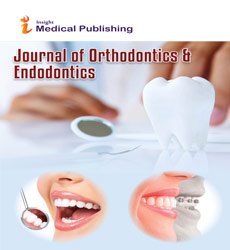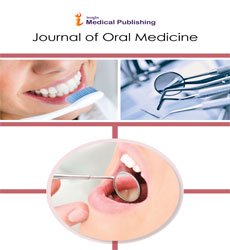Theme: Covid 19 : Challenges Ahead for Dental and Oral Health
Dental Science Congress 2020
Conference Series LLC Ltd invites you to attend the World Dental Science and Oral Health Congress to be held in July 23-24, 2020 with the theme “Innovative Ideas and Approaches in Dental Science and Oral Health Care”. The main aim of Dental Science 2020 webinar is to discuss the research, advanced techniques and treatment in all fields of dental and related sciences.
The latest techniques, improvements, and the most current updates in Dentistry. This is your best chance to achieve the biggest gathering of members from the Dental group. Lead introductions, disseminate data, meet with present and potential specialists, make a splash with new improvements, and get name acknowledgment at this Webinar. Proceeding with dental training guarantee that the dental practitioners are given the most recent symptomatic, preventive and treatment techniques in the business.
Target Audience:
-
Dentists
-
Principal Dentist’s
-
Dental Nurses
-
Dental Surgeons
-
Endodontists
-
Prosthodontists
-
Oral Pathologists
-
Orthodontists
-
Periodontics
-
Dental House Officers
-
Dental and Oral Health Researchers, Faculty and Students
-
Dental and Oral Health Associations, Societies and Universities
-
Dental or Oral Hygienists & Therapists
-
Dental Treatment Coordinators
-
Dental Partners or Owners
-
Dental Wholesalers, Dealers and Distributors
Submit your abstract to avail speaker opportunity at: https://dentalscience.dentalcongress.com/abstract-submission.php
Avail Early bird discount and best accommodation prices by Registering at:
https://dentalscience.dentalcongress.com/registration.php
Conference Series llc Ltd is pleased to invite you to participate in the 41st World Dental Science and Oral Health Congress (Dental Webinar) during July 22-24 , 2020..
The 41st World Dental Science and Oral Health Congress aims to bring together experts from various disciplines of Dental practice, education, research and management and provides an ambient platform for practitioners, Dental Doctors, researchers and students to sow and reap knowledge on recent and current advancements in the various fields of Dentistry. Dental Doctors and related healthcare professionals will have an ample opportunity to connect with colleagues, researchers, exhibitors and young talents and have discussions on emerging trends and challenges in real-time practice.
Benefits:
- Accepted abstracts will be published in Journal of Orthodontics and Endodontics provided with DOI
- Networking Opportunities, Grow Your Professional Network
- Build Your Knowledge Base
- Expand Your Resources
- Break Out of Your Comfort Zone
- New Tips & Tactics
- Greater Focus
- The Serendipity of the Random Workshop
This year Dental Science 2020 explores Oral Care access and support, service design and specialized clinically focused programs, physical wellbeing, and Dental Care Management, Dental workplaces, strategies and support for denticians, Paediatric dentists. Dental Science 2020 webinar organizing committee is confident that participants will benefit from the high value scientific program. We welcome all the researchers/practitioners to join us at Netherlands for two days of stimulating discussions, knowledge sharing, and networking events.
Sessions/Tracks:
Track 1. Cosmetic Dentistry
Cosmetic dentistry states to any dental work that enhances the presence of a man's teeth, gums. It fundamentally centers around improvement dental feel in shading, position, shape, size, arrangement and general grin appearance. It includes expansion of a dental material to teeth or gums, evacuation of tooth structure or gums, rectifying of teeth joined by change in appearance of face.
Track 2. Dental Education
Dental Education has arrived at a crossroads. And the most recent 150 years, it has advanced from a short prelude to apprenticeship into an exhaustive program of expert training. A dental training opens a universe of expert openings. Notwithstanding private practice, the present dental school graduates can work in doctor's facility crisis rooms, direct propelled lab inquire about, show future dental practitioners or even venture to the far corners of the planet with worldwide wellbeing and alleviation associations.
Track 3. Craniofacial Surgery
Craniofacial surgery is a surgical subspecialty of oral and maxillofacial surgery and plastic and reconstructive surgery that deals with congenital and acquired deformities of the head, skull, face, neck, jaws and related structures. Despite the fact that craniofacial treatment frequently includes control of bone, craniofacial surgery is not tissue-particular; craniofacial specialists manage bone, skin, nerve, muscle, teeth, and other related life systems. Deformities normally treated by craniofacial specialists incorporate craniosynostosis (segregated and syndromic), uncommon craniofacial clefts, intense and interminable sequellae of facial cracks, congenital fissure and sense of taste, micrognathia, Treacher Collins Syndrome, Apert's Syndrome, Crouzon's Syndrome, Craniofacial microsomia, microtia and other innate ear irregularities, and numerous others.
Track 4. Periodontology:
Periodontology is the investigation of supporting structures of teeth and keeps up their position in the jaw. The supporting tissues are known as the periodontium which incorporates the gingiva (gums), alveolar bone, cementum, and the periodontal tissue. The irritation of gingiva is called gingivitis which additionally forms into periodontitis, which causes versatility of teeth.
Track 5. Orthodontics:
Orthodontics and Dentofacial Orthopedics is an investigation on arrangement of the teeth and the dental arches (the maxilla and the mandible). The training incorporates finding and correction of malocclusion and different variations from the norm of the creating orofacial structures. Maligned teeth are the teeth that are not amended in proper position and are harder to keep clean and are in danger of early misfortune because of tooth decay and periodontal sickness, and cause additional chewing forces on the masticatory muscles that can prompt cerebral pains, TMJ disorder and neck and back agony. It can be dealt with by Orthodontic treatment by giving props or different appliances.
Track 6: Endodontics:
Endodontics is the study and etiology, diagnosis, prevention and treatment of the dental pulp alongside related tooth structure. Perform an assortment of procedures including root canal treatment, apical surgery, treating broken teeth and treating dental injury. Root canal treatment is the most widely recognized treatments done by endodontist. The infected Dental pulp is saved with the root canal treatment, which helps to prevent further infection of the tooth. Root canal treatment.
Track 7: Paediatric Dentistry:
Pediatric Dentistry is the branch of dentistry that is study of primary teeth ie. from birth to adolescences. Dental issues in children are common because of dietary habits and poor oral hygiene. Dental problems in children are dealt with in the beginning periods. It is fundamental to include a dental visit within a half year of the essential tooth or by a kid first birthday celebration. This is in light of the fact that early oral examination helps in the recognizable proof of the early periods of tooth condition and other oral habits.
Track 8. Oral Pathology:
Oral and maxillofacial pathology (likewise named oral pathology, stomatognathic ailment, dental ailment, or mouth illness) refers to the sicknesses of the mouth, jaws and related structures, for example, salivary organs, temporomandibular joints, facial muscles and perioral skin (the skin around the mouth). The mouth is an essential organ with various capacities. It is likewise inclined to an assortment of therapeutic and dental disorders.
The specialty oral and maxillofacial pathology is concerned with determination and investigation of the circumstances and end results of sicknesses influencing the oral and maxillofacial region. It is sometimes thought to be a fame of dentistry and pathology. Sometimes the term head and neck pathology is used, yet this may suggest that the pathologist manages otorhinolaryngologic disarranges (i.e. ear, nose and throat) notwithstanding maxillofacial disorders. In this part there is some role between the expertise of head and neck pathologists and that of endocrine pathologists.
Track 9. Dental Implants:
A Dental Implant (otherwise called an endosseous implant or fixture) is a surgical part that interfaces with the bone of the jaw or skull to help a dental prosthesis, for example, a crown, bridge, denture, facial prosthesis or as an orthodontic anchor. The reason for present day dental implant is a biologic procedure called osseointegration, in which materials, such as, titanium frame an intimate attachment to bone. The implant is first set as osseointegrate, then a dental prosthetic is included. A variable measure of healing time is required for osseointegration before either the dental prosthetic (a tooth, extension or denture) is appended to embed or an abutment is put which will hold a dental prosthetic.
Track 10: Dental Material Sciences:
Research in science and current dentistry has been driven by advancements in biomaterials science. A biomaterial is any substance or medication that has been intended to associate with an organic framework for a remedial or restorative reason. With the advancement of any new biocompatible materials, it can be utilized for the change and by existing materials qualities that can thusly expand the utilizations of biomaterials in dentistry field. The most regularly utilized biomaterials including dentin holding, luting specialist, glass ionomers and earthenware production require a superior comprehension in multidisciplinary approach, for the advancement of new plans. so as to get more agreeable properties organically and with enhanced biocompatibility.
Track 11: Holistic Dentistry
Holistic dentistry is a combination of both modern science and natural healing. This arrangements with patient's, body and soul by not simply concentrating on his teeth like standard dental practitioners. Treatment incorporates a differing scope of methodologies and practices with solid resistance to the utilization of amalgam in dental filling and careful methodologies. Holistic dentistry practitioners vary in terms of services they offer, techniques they follow and preventive approaches to dentistry.
Track 12: Dental Nursing and Public Health Dentistry
Dental nurses are dental care experts that give help and support to clinical and non-clinical parts of patient care. A dental nurse can work in all branches of dentistry like general dental practice and healing facility and network administrations. Parts and obligations of dental nurse include: Performing contamination control and disinfecting methodology, dealing with dental materials, keeping up dental hardware and instruments and giving regulatory help. Dental nurse ought to keep up moral conduct for the calling, for the patient and for the network. Morally, dental nurse ought to be persuaded to keep up respect and honesty of the calling and bolster the dental specialist in legitimate patient treatment and welfare of the network. Dental nurse ought to perform just those dental works which they are qualified for perform.
The exemplification of general prosperity dentistry lies in the way that the range focuses on a gathering or masses with everything taken into account and not solitary patients. General prosperity dental experts work towards headway of general oral and dental soundness of their gatherings. They encourage patients to conform to hones that may help improve their general dental prosperity as time goes on. General prosperity dentistry in like manner centers around persistent preparing, extended awareness of government tasks and tries towards amass dental prosperity and wellbeing.
Track 13: Forensic odontology
Forensic odontology is the best possible taking care of, examination and assessment of dental evidence, which will be then exhibited considering a legitimate concern for equity. The confirmation that might be taken from teeth is the age (in youngsters) and distinguishing proof of the individual to whom the teeth have a place. This is finished utilizing dental records including radiographs, risk mortem (preceding demise) and posthumous (after death) photos and DNA. The other sort of confirmation is that of chomp marks, left on either the casualty (by the assailant), the culprit (from the casualty of an assault), or on a question found at the wrongdoing scene. Nibble marks are frequently found on kids who are mishandled.
Track 14: Geriodontics:
Geriodontics is the conveyance of dental care to older adults including the finding, avoidance, and treatment of issues related with typical maturing and age-related ailments as a component of an interdisciplinary group with other human services experts. The dental ailments that the elderly is especially inclined to root caries, steady loss, periodontal illness, missing teeth as a result of prior disregard, edentulism, low quality of alveolar edges, sick fitting dentures, mucosal sores, oral ulceration, dry mouth (xerostomia), oral malignancies, and widespread caries.
Track 15: Nano dentistry
Nano dentistry is a branch that includes the upkeep and up degree of oral medicinal services yet more exact by utilizing nanomaterial's, biotechnology, including tissue building and eventually Dental Nano Robotics. Ongoing improvements of nanoparticles and nanotubes in agent dentistry, Endodontics, periodontal administration, has assumed a developing part in the upgrade of dental industry. Nanomaterial's and nanoparticles are foundations of creative dental gadgets utilized for sedate revelation and conveyance, disclosure of biomarkers, and sub-atomic diagnostics. Nano dentistry plans to control and tweak molecule to make special with novel properties and advances in dentistry.
Track 16: Digital Dentistry:
"Dentistry used to be a materials-oriented industry, and today the procedure advancement is similarly as essential as the materials," says Dr. George Tysowsky. Computerized dentistry might be characterized in a wide degree as any dental innovation or gadget that fuses advanced or PC controlled parts rather than that of mechanical or electrical alone. In Dentistry, Digital advances are quickly progressing: new instruments, for example, intra/additional oral scanners, cone bar processed tomography (CBCT) scanners, PC supported plan/PC helped producing (CAD/CAM) programming's and imaginative creation methods, for example, 3D printing and layered assembling are changing the way we treat our patients. Computerized dentistry innovation offers noteworthy points of interest over customary dentistry techniques.
The saturation of the marketplace in most segments increased competitiveness and has had a negative impact on the average selling prices. The presence of smaller competitors with more modest overhead costs, and the increasing growth of Asian imports, has put downward pressure on prices. Since many of the companies operating in the market participated in multiple market segments, several dental equipment manufacturers and distributors packaged their devices in order to provide more enticing product offerings to end users. Companies operating in both the dental imaging and treatment center markets, for example, offered packaged deals by combining multiple devices and selling them at discounted prices, in order to drive sales.
Dental Services Market Size:
The global dental services market reached a value of nearly $436.2 billion in 2018, having grown at a compound annual growth rate (CAGR) of 7.4% since 2014, and is expected to grow at a CAGR of 9.6% to nearly $629.3 billion by 2022. Growth in the historic period resulted from favorable government initiatives, aging populations, and emerging markets growth. Factors that negatively affected growth in the historic period were unqualified man power, limited coverage for dental services, and weak wage growth in developed countries.
Going forward, rising demand for cosmetic dentistry, growing dental tourism, increasing popularity of franchise dentistry, and technological advances will drive growth. Factors that could hinder the growth of the dental services market in the future include increasing costs of dental procedures, rising interest rates, and stringent government regulations.
Dental Services Market Drivers:
The aging population profile of most countries contributed to the growth of the dental services market. During the historic period, the number of people globally over the age of 65 grew from below 450 million to 601 million, an increase of 33%, according to estimates based on Population Reference Bureau data. Dental issues such as xerostomia, periodontal diseases, and dry mouth are common among the geriatric population. The increase in the size of aging population has increased the patient pool with dental disorders such as periodontal disease, plaque, mouth cancer, tooth decay denture-related problems and soft tissue problems. In 2013, it was estimated that $111 billion were spent on dental services in the USA, and older adults spent more than any other age group on dental care with an average of $800 per person. Moreover, in Australia, 42% of people with natural teeth and aged 65 or above wore dentures. Increased demand for dental services from older populations drove the market in the historic period.
While this report suite contains all Asia dental equipment market data, each of the market segments are also available as stand alone This allows you to get access to only the dental equipment market research that you need. You can view all these included reports and segmentation here:
- Dental Treatment Center Market For the purpose of this report, a Dental Treatment Center comprises a dental chair, a dental stool, an operatory light and a delivery unit. The patient chair, operatory light and delivery unit are typically sold in a bundle as an operatory package. Depending on the dentist’s needs and budget, each item is also sold separately.
- Dental Handpiece Market –A dental handpiece is a mechanical device designed for use with rotary instruments, such as burs, stones, wheels and discs. The most commonly used modern version of this device is the air turbine handpiece, which can operate at up to 800,000 revolutions per minute (rpm).
- Curing Light Market –Curing lights, which are frequently used in all dental offices, harden direct restorative materials such as composite resins, cements and other adhesives used to fill cavities or root canals.
- Dental Scaler Market –Scaling is a conventional non-surgical procedure that removes and eliminates plaque and calculus. This is important since plaque and calculus incubate bacteria that release toxins, which cause inflammation to the gum and surrounding bone.
- Intraoral Camera Market – Intraoral dental are supplementary imaging devices used to capture images of a patient’s mouth. The market for dental cameras was largely being driven by the sales of intraoral cameras, as their popularity grew immensely with the high ROI potential of using the devices for patient education.
- Dental Autoclave Market –The process of sterilizing dental instruments such as handpieces begins with cleaning the instruments using a washer or ultrasonic cleaner. The instruments are then treated in dental autoclaves, which sterilize the equipment by applying high-pressure steam to destroy pathogens and other bacterial spores.
- Caries Detection Device Market – Caries is a disease that results in the disintegration of the crystalline structure of the tooth. There are several different methods of detecting caries. The most commonly used technology is Light Induced Fluorescence Technology (LIFT); it detects bacteria on the surface of the tooth by illuminating it with violet light.
- OTHER INFORMATION – Company Profiles and SWOT, Disease Overviews, & Related Press Releases from Top Competitors
DENTAL EQUIPMENT MARKET REPORT DATA TYPES INCLUDED
- Unit Sales, Average Selling Prices, Market Value & Growth Trends
- Forecasts Until 2025, and Historical Data to 2015
- Market Drivers & Limiters for Each Segment
- Competitive Analysis with Market Shares for Each Segment
- Recent Mergers & Acquisitions
- Disease Overviews and Demographic Information
- Company Profiles, Product Portfolios and SWOT for Top Competitors
- Related Press Releases from Top Competitors
Conference Highlights
- Cosmetic Dentistry
- Craniofacial Surgery
- Dental Education
- Periodontology
- Orthodontics
- Endodontics
- Paediatric Dentistry
- Oral Pathology
- Dental Material Sciences
- Dental Implants
- Holistic Dentistry
- Dental Nursing and Public Health Dentistry
- Forensic Odontology
- Geriodontics
- Nano Dentistry
- Digital Dentistry
To share your views and research, please click here to register for the Conference.
To Collaborate Scientific Professionals around the World
| Conference Date | July 23-24, 2020 | ||
| Sponsors & Exhibitors |
|
||
| Speaker Opportunity Closed | |||
| Poster Opportunity Closed | Click Here to View | ||
Useful Links
Special Issues
All accepted abstracts will be published in respective Our International Journals.
- Journal of Orthodontics & Endodontics
- Dental and Craniofacial Research
- Journal of Oral Hygiene & Health
Abstracts will be provided with Digital Object Identifier by

